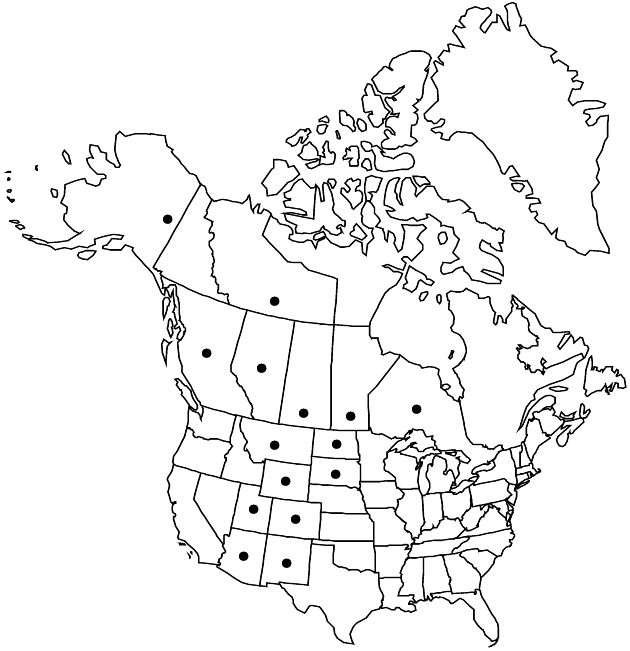Senecio eremophilus
in J. Franklin et al., Narr. Journey Polar Sea, 759. 1823.
Perennials, (20–)40–80(–140) cm (caudices branched, fibrous-rooted). Herbage glabrous or glabrate. Stems single or loosely clustered. Leaves ± evenly distributed (proximal often withering before flowering); petiolate or sessile; blades ovate or lanceolate to narrowly lanceolate, (3–)6–12(–20) × (1–)1.5–5(–7) cm, bases tapered, margins usually pinnate to lacerate, sometimes dentate. Heads 10–60+ in compound corymbiform arrays. Calyculi of 3–5+ (prominent or inconspicuous) bractlets (lengths to 3/4 phyllaries). Phyllaries (± 8) ± 13, 3–8+ mm, tips green or black. Ray florets ± 8; corolla laminae 5–10 mm. Cypselae usually glabrous, sometimes hirtellous. 2n = 38, 40, 44.
Distribution

Mostly n, w North America.
Discussion
Varieties 3 (3 in the flora).
Varieties of Senecio eremophilus are distinguished by head size and distribution. Varieties eremophilus and macdougalii are notably different; var. kingii is intermediate in both morphology and distribution.
Selected References
None.
Lower Taxa
Key
| 1 | Calyculi: bractlets prominent (lengths of at least some to about 3/4 phyllaries); involucres 7–10 mm diam.; phyllaries 6–8 mm, tips green or weakly, if at all, black | Senecio eremophilus var. eremophilus |
| 1 | Calyculi: bractlets conspicuous or inconspicuous (lengths rarely to 1/2 phyllaries); involucres 5–8 mm diam.; phyllaries 3–6 mm, tips usually black | > 2 |
| 2 | Calyculi: bractlets conspicuous (lengths to 1/2 phyllaries); involucres (5–)6–8 diam.; phyllaries ± 13, (4–)5–6 mm | Senecio eremophilus var. kingii |
| 2 | Calyculi: bractlets inconspicuous; involucres 4–5(–6) mm diam.; phyllaries ± 8 or ± 13, 3–5 mm | Senecio eremophilus var. macdougalii |